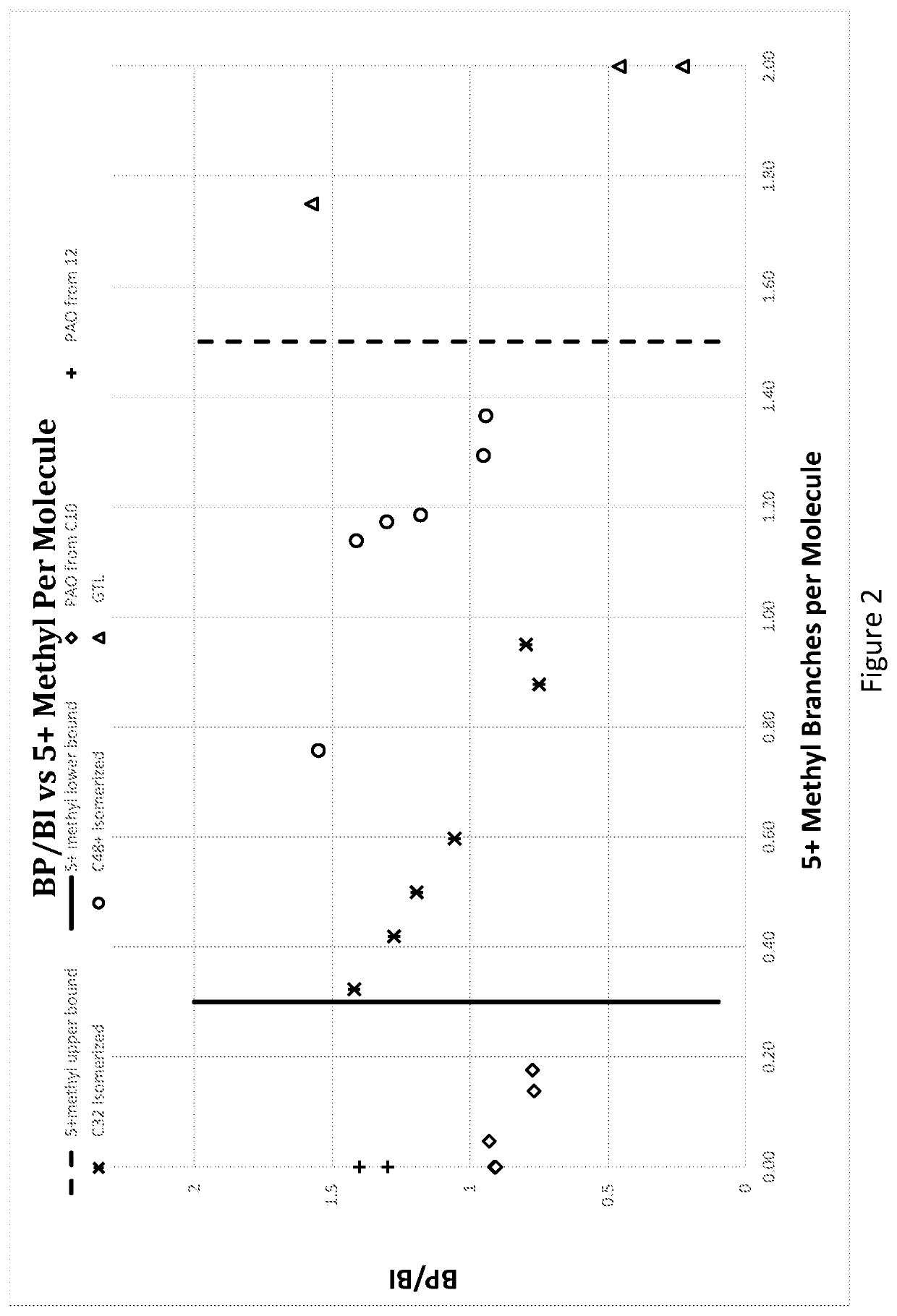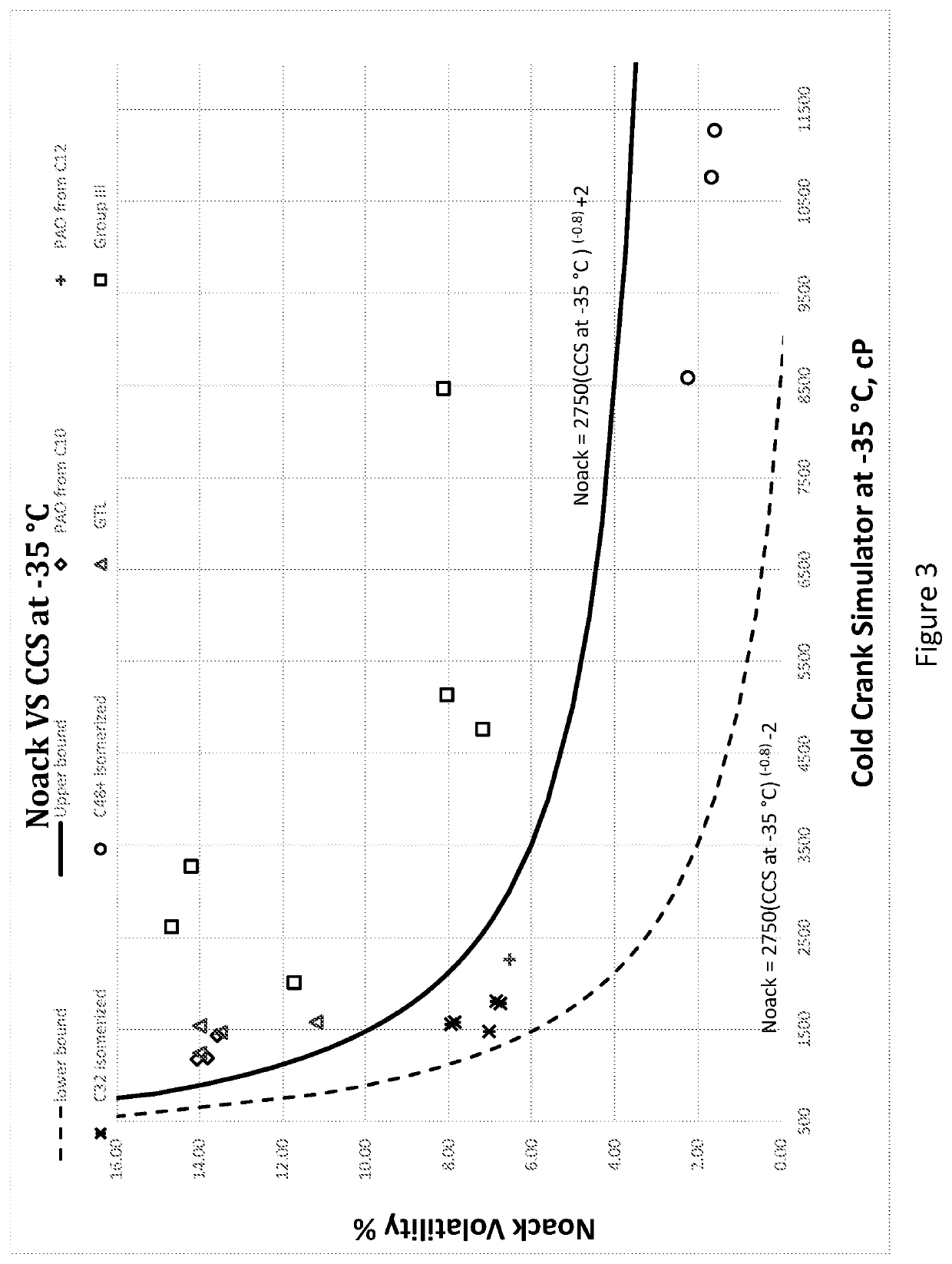Hydrocarbon mixture exhibiting unique branching structure
a technology of hydrocarbon mixture and branching structure, which is applied in the direction of hydrocarbon oil treatment products, lubricant compositions, chemistry apparatus and processes, etc., can solve the problems of increasing demand, non-renewability of most feedstocks for large-scale base stock manufacturing, and poor pour point of gtl base stocks, etc., to achieve excellent pour point, ease the demand, and excellent pouring characteristics
- Summary
- Abstract
- Description
- Claims
- Application Information
AI Technical Summary
Benefits of technology
Problems solved by technology
Method used
Image
Examples
examples 1-6 (
C28-C40 Hydrocarbon Mixtures)
Example 1
[0101]1-Hexadecene with less than 8% branched and internal olefins was oligomerized under BF3 with a co-catalyst composition of Butanol and Butyl Acetate. The reaction was held at 20° C. during semi-continuous addition of olefins and co-catalyst. The residence time was 90 minutes. The unreacted monomer was then distilled off, leaving behind less than 0.1% monomer distillation bottoms. A subsequent distillation was performed to separate the dimer from the trimer+ with less than 5% trimer remained in the dimer cut.
[0102]The dimers were then hydroisomerized with a noble-metal impregnated aluminoslicate of MRE structure type catalyst bound with alumina. The reaction was carried out in a fixed bed reactor at 500 psig and 307° C. Cracked molecules were separated from the hydroisomerized C16 dimer using an online stripper.
example 2
[0103]The oligomerization and subsequent distillation were performed identically to Example 1. The dimers were then hydroisomerized with a noble-metal impregnated aluminoslicate of MRE structure type catalyst bound with alumina. The reaction was carried out in a fix bed reactor at 500 psig and 313° C. Cracked molecules were separated from the hydroisomerized C16 dimers using an online stripper.
example 3
[0104]The oligomerization and subsequent distillation were performed identically to Example 1. The dimers were then hydroisomerized with a noble-metal impregnated aluminoslicate of MRE structure type catalyst bound with alumina. The reaction was carried out in a fix bed reactor at 500 psig and 324° C. Cracked molecules were separated from the hydroisomerized C16 dimers using an online stripper.
PUM
| Property | Measurement | Unit |
|---|---|---|
| boiling point | aaaaa | aaaaa |
| boiling point | aaaaa | aaaaa |
| pour point | aaaaa | aaaaa |
Abstract
Description
Claims
Application Information
 Login to View More
Login to View More - R&D
- Intellectual Property
- Life Sciences
- Materials
- Tech Scout
- Unparalleled Data Quality
- Higher Quality Content
- 60% Fewer Hallucinations
Browse by: Latest US Patents, China's latest patents, Technical Efficacy Thesaurus, Application Domain, Technology Topic, Popular Technical Reports.
© 2025 PatSnap. All rights reserved.Legal|Privacy policy|Modern Slavery Act Transparency Statement|Sitemap|About US| Contact US: help@patsnap.com



